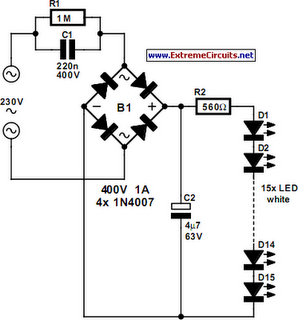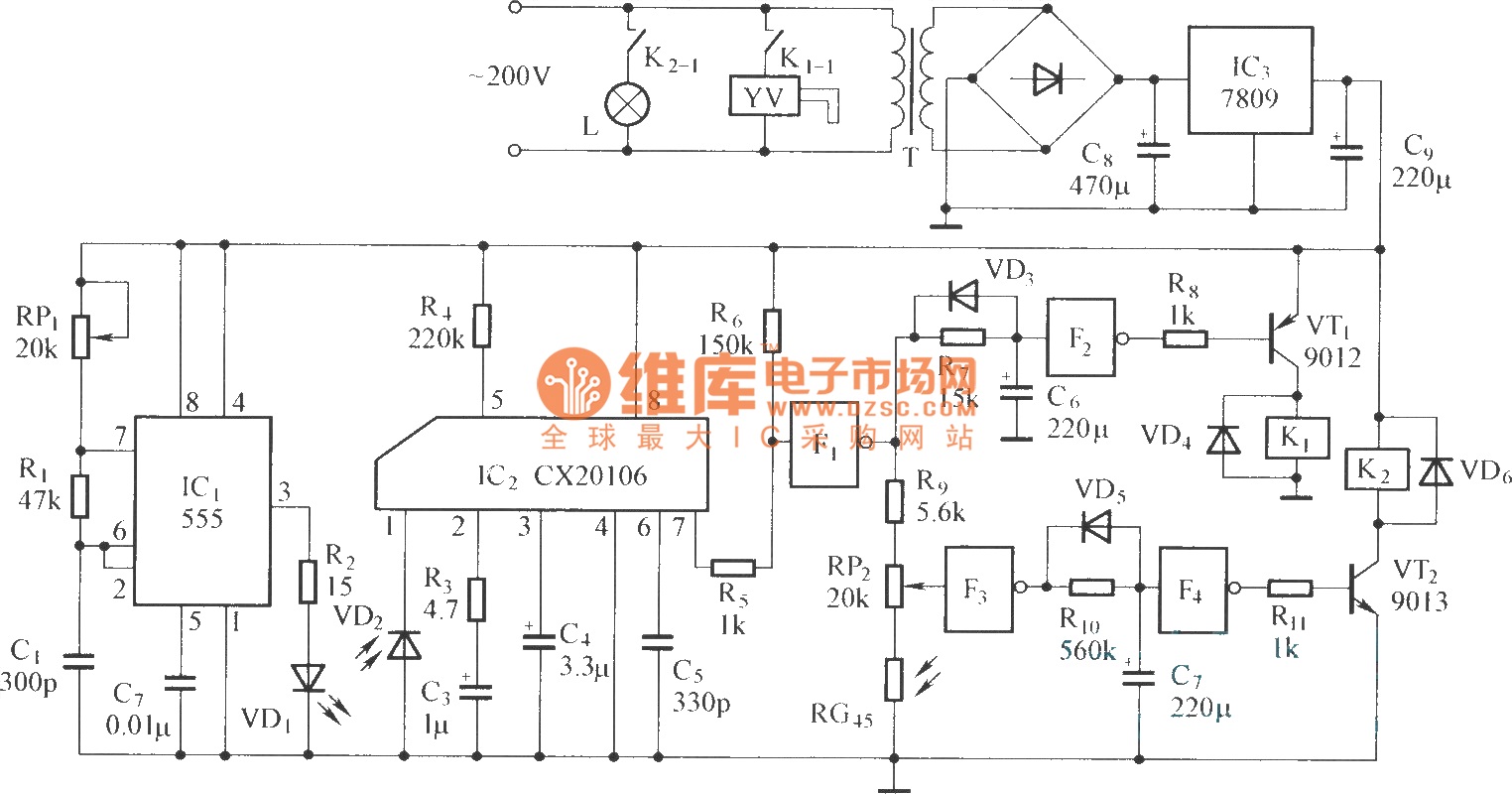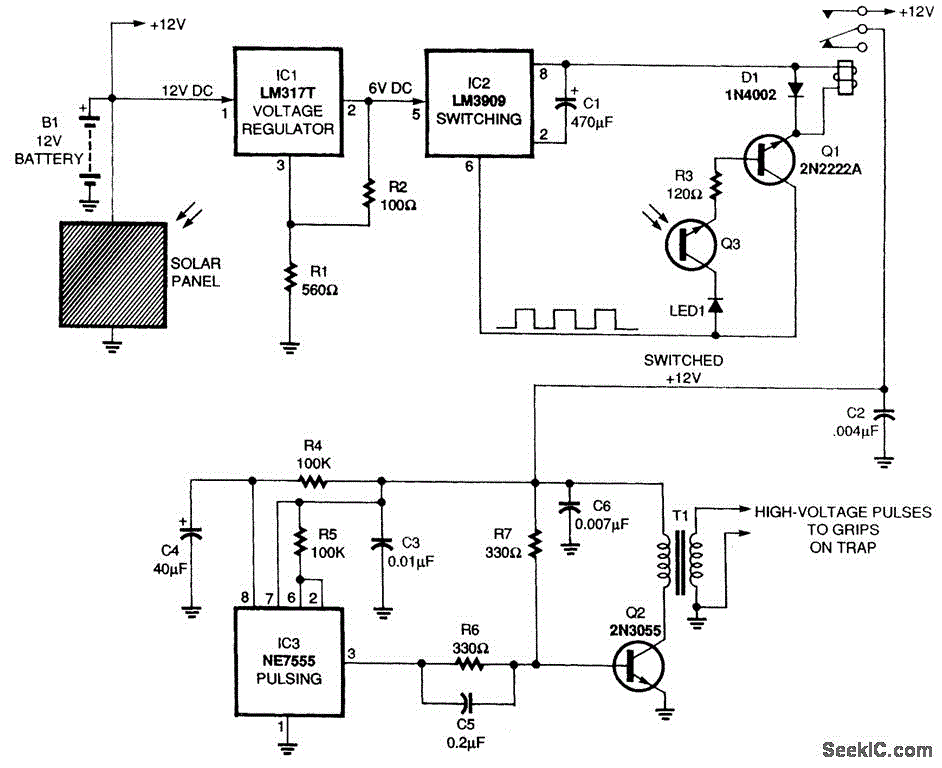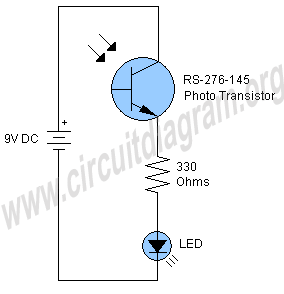
Power-line outage flashes red alert
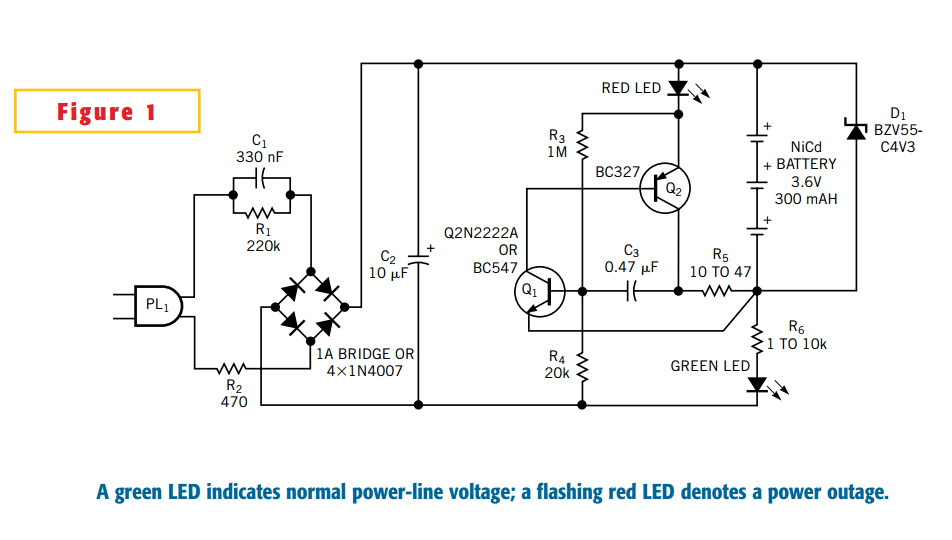
This Design Idea expands on a circuit in a previous one to configure a power-outage detector with a flashing alarm (Figure 1, Reference 1). The circuit plugs into a mains outlet and uses trickle-charged nickel-cadmium batteries. The green-LED monitors the presence of line voltage. The BZV55-C4V3 zener diode, D1 protects the batteries against overvoltage. Voltage bias from R6 and the green LED keeps Q1 off, so the Q1-Q2 RC oscillator remains off.
The described circuit functions as a power-outage detector that utilizes a combination of components to monitor line voltage and activate an alarm during a power failure. The circuit is designed to be plugged directly into a mains outlet, where it can continuously monitor the voltage level.
The primary component responsible for indicating the presence of line voltage is the green LED. When the mains power is present, the LED illuminates, providing a visual indication that the circuit is operational. This LED is connected in such a way that it receives its bias voltage from a resistor labeled R6, which ensures that the LED operates within its specified current limits.
To protect the battery system from potential overvoltage conditions, a BZV55-C4V3 zener diode (D1) is employed. This diode clamps the voltage at a predetermined level, ensuring that the trickle-charged nickel-cadmium batteries do not exceed their maximum voltage rating. This is crucial for maintaining battery health and longevity, as overcharging can lead to reduced performance or failure.
The circuit employs a bipolar junction transistor (BJT), Q1, which is kept in the off state during normal operation due to the biasing provided by R6 and the green LED. This configuration prevents the Q1-Q2 RC oscillator from activating, meaning that the alarm remains silent when power is supplied. However, in the event of a power outage, the absence of line voltage causes the green LED to turn off, which in turn allows Q1 to turn on. This transition triggers the RC oscillator circuit formed by Q1 and Q2, resulting in an audible alarm that alerts users to the power failure.
Overall, this design effectively combines visual and auditory signals to notify users of power interruptions, while also incorporating protective measures for the battery system. The simplicity of the circuit design allows for easy implementation and reliable operation in various applications where power outage detection is critical.This Design Idea expands on a circuit in a previous one to configure a power-outage detector with a flashing alarm (Figure 1, Reference 1). The circuit plugs into a mains outlet and uses trickle-charged nickel-cadmium batteries. The green-LED monitors the presence of line voltage. The BZV55-C4V3 zener diode, D1 protects the batteries against overvoltage. Voltage bias from R6 and the green LED keeps Q1 off, so the Q1-Q2 RC oscillator remains off. 🔗 External reference
The described circuit functions as a power-outage detector that utilizes a combination of components to monitor line voltage and activate an alarm during a power failure. The circuit is designed to be plugged directly into a mains outlet, where it can continuously monitor the voltage level.
The primary component responsible for indicating the presence of line voltage is the green LED. When the mains power is present, the LED illuminates, providing a visual indication that the circuit is operational. This LED is connected in such a way that it receives its bias voltage from a resistor labeled R6, which ensures that the LED operates within its specified current limits.
To protect the battery system from potential overvoltage conditions, a BZV55-C4V3 zener diode (D1) is employed. This diode clamps the voltage at a predetermined level, ensuring that the trickle-charged nickel-cadmium batteries do not exceed their maximum voltage rating. This is crucial for maintaining battery health and longevity, as overcharging can lead to reduced performance or failure.
The circuit employs a bipolar junction transistor (BJT), Q1, which is kept in the off state during normal operation due to the biasing provided by R6 and the green LED. This configuration prevents the Q1-Q2 RC oscillator from activating, meaning that the alarm remains silent when power is supplied. However, in the event of a power outage, the absence of line voltage causes the green LED to turn off, which in turn allows Q1 to turn on. This transition triggers the RC oscillator circuit formed by Q1 and Q2, resulting in an audible alarm that alerts users to the power failure.
Overall, this design effectively combines visual and auditory signals to notify users of power interruptions, while also incorporating protective measures for the battery system. The simplicity of the circuit design allows for easy implementation and reliable operation in various applications where power outage detection is critical.This Design Idea expands on a circuit in a previous one to configure a power-outage detector with a flashing alarm (Figure 1, Reference 1). The circuit plugs into a mains outlet and uses trickle-charged nickel-cadmium batteries. The green-LED monitors the presence of line voltage. The BZV55-C4V3 zener diode, D1 protects the batteries against overvoltage. Voltage bias from R6 and the green LED keeps Q1 off, so the Q1-Q2 RC oscillator remains off. 🔗 External reference
Warning: include(partials/cookie-banner.php): Failed to open stream: Permission denied in /var/www/html/nextgr/view-circuit.php on line 713
Warning: include(): Failed opening 'partials/cookie-banner.php' for inclusion (include_path='.:/usr/share/php') in /var/www/html/nextgr/view-circuit.php on line 713


